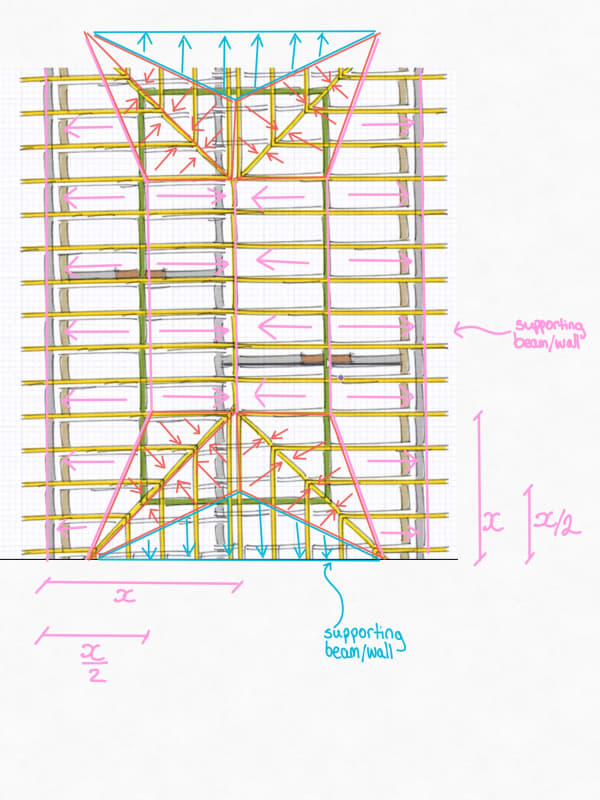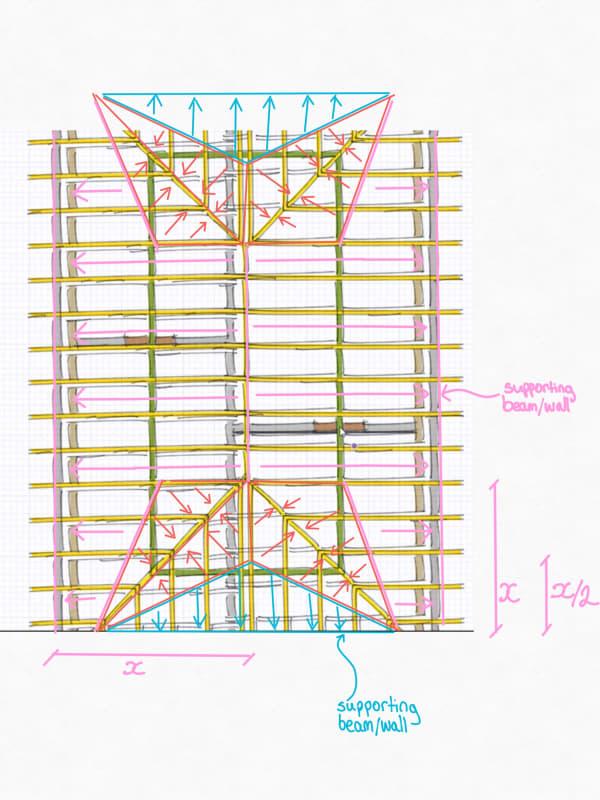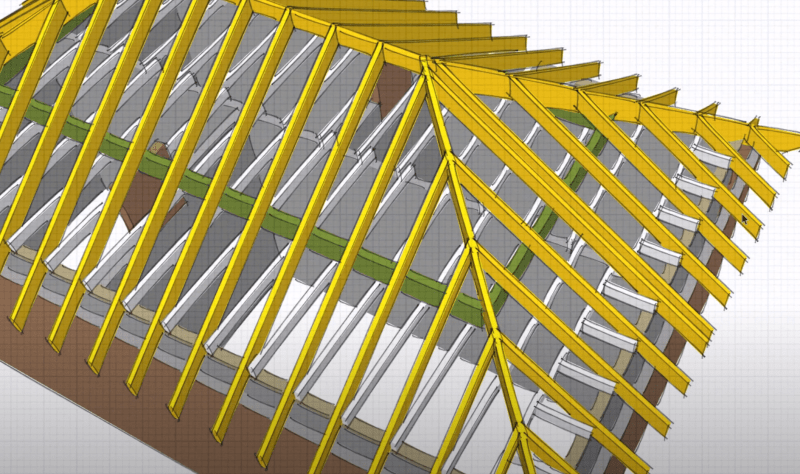That's a good question. I don't think there would really be any vertical load to the hips. The way I think about this is that the bottom of the rafters (including the jack rafters) are essentially pinned. Considering the bottom as pinned, then any given rafter will be stable as long as a horizontal force at the top of the rafter can be resisted. I imagine that a ladder is resting up against a wall made of ice and the bottom of the ladder is connected to the floor with a hinge (pinned connection). At the top of the ladder, the wall can't resist any vertical load but it will resist a horizontal load. This is how I think of the rafters in a "compression roof." [While on the topic, if the bottom of the rafters are not connected to the floor/ceiling, then I think of this in a similar manner except with the bottom of the ladder not connected to the floor (which is also ice). Then the bottom of the ladder can slide horizontally. In this case, it becomes obvious that the ladder will be unstable unless there's a vertical support at the top (like a structural ridge beam).]
So, then the question is whether or not a horizontal force can be resisted at the top of the jack rafters. I think the answer would probably be yes assuming that you have a roof diaphragm (plywood nailed to the rafters). Even without relying on a roof diaphragm, though, it's possible that the roof would still work. I think you would find that the ridge and hip boards all act as compression members if you were to analyze a 3D model of this, and that the size of those members to work by code would be reasonable.
One other observation is that for a roof like this to fail globally, even without any horizontal support at the bottom of the rafters, the roof sheathing would have to either rip apart or detach from the hips to fail. I'm not sure that's of much use in analyzing this, but I think it's the reason why a lot of roofs which seem wildly inadequate based on analysis can often hold-up in the real world. As an engineer, though, I wouldn't want to rely on the strength of the sheathing in the case of no horizontal support at the bottom.
Finally, I think the actual distribution of forces and stresses in a roof like this is some complicated interaction between the framing members, roof sheathing, and nails. If you're not certain of what's going on, I would probably create a 3D model in RISA 3D or some other software as a sanity check. You would just model the framing members and wouldn't account for any additional strength from the plywood (aside from bracing the members against buckling).




